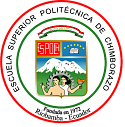Educational software for the recognition of emotions in children with autism: Case of study at the Special Education Institute “Carlos Garbay”
DOI:
https://doi.org/10.47187/perspectivas.vol1iss2.pp8-14.2019Keywords:
Autism, Emotions, Educational Software, TICsAbstract
Present work reposts on the development of a software tool to support teaching-learning process about the emotion recognition on autistic children. To collect specific information from the target group, a field study was carried out in the Especial Education Institute “Carlos Garbay” in Riobamba city. The collected information begins with the design stage, based on the Bruce Archer´s methodology, allowing to elaborate a specific identity for the application. Regarding software development the Peré Marqués methodology was used. Results obtained are the identity, the structuring and layout of educational software with the respective navigation map and user manual. Also, from the test performed in the Institute, it was observed that the recognition of emotions by autistic children increased from a medium to medium-high level.
Métricas
References
AUTISM SPEAKS. ¿Qué es el autismo? Una descripción [en línea]. Canadá, 2017. [Consulta: 26 abril 2017]. Disponible en: https://www.autismspeaks.org/qu%C3%A9-es-el-autismo
LOZANO, J, et al., “Las tecnologías de la información y comunicación (TIC) en el proceso de enseñanza y aprendizaje del alumnado con trastorno del espectro autista (TEA)”. Revista fuentes [en línea], 2013, (España) volumen (14), pp. 195-198. [Consulta: 13 enero 2017]. Disponible en: http://institucional.us.es/revistas/fuente/14/LAS%20TECNOLOG%C3%8DAS%20DE%20LA%20INFORMACI%C3%93N.pdf
CUXART, FRANCESC. EL AUTISMO – ASPECTOS DESCRIPTIVOS Y TERAPÉUTICOS [en línea]. Málaga-España: Aljibe, 2000. [Consulta: 23 de abril 2017]. Disponible en: http://www.autismo.com.es/autismo/documentacion/documents/El%20autismo.pdf
GARZA, JAVIER. AUTISMO – MANUAL AVANZADO PARA PADRES [en línea]. Bogotá-Colombia: PSICOM Editores. [Consulta: 26 de abril 2017]. Disponible en: http://ciapat.org/biblioteca/pdf/686-Autismo_manual_avanzado_para_padres.pdf
CENTERS FOR DISEASE CONTROL AND PREVENTION. Autism Spectrum Disorder (ASD) [en línea]. Atlanta-USA: U.S. Department of Health & Human Services, 2016. [Consulta: 26 abril 2017]. Disponible en: https://www.cdc.gov/ncbddd/autism/facts.html
COHEN, SIMON BARON. Autismo y Síndrome de Asperger – traducción de Sandra Chaparro [en línea]. Madrid-España: Alianza editorial, 2010. [Consulta: 17 de marzo 2017]. Disponible en: http://www.dandrosh.com.mx/books/Autismo%20y%20Sindrome%20de%20Asperger%20-%20Simon%20Baron%20Cohen.pdf
RAMÓN LATORRE, Ivonne Viviana. “Ejercicios basados en juegos para el desarrollo de la adaptación social en los niños y niñas con Autismo de la Unidad Educativa “Carlos Garbay” de la ciudad de Riobamba en el periodo septiembre 2015- marzo 2016” [En línea] (tesis). (pregrado) Universidad Nacional de Chimborazo, Facultad de Ciencias de la Salud, Escuela de cultura Física y Entretenimiento Deportivo.2016. pp.15-19. [Consulta: 2017-04-20]. Disponible en: http://dspace.unach.edu.ec/bitstream/51000/1783/1/UNACH-EC-CUL-FIS-2016-0014.pdf
MIGUEL MIGUEL, A. M. “El mundo de las emociones en los autistas.”. Revista Electrónica Teoría de la Educación: Educación y Cultura en la Sociedad de la Información [en línea], 2006, (España) 7(2), p. 173-179. [Consulta: 26 abril 2017]. ISSN 1138-9737. Disponible en: https://gredos.usal.es/jspui/bitstream/10366/56512/1/TE2006_V7N2_P169.pdf
RENÉE, V. Aprovechar el poder del color para atender a su historia [en línea]. 2015. [consulta:04 de mayo 2017]. Disponible en: http://nofilmschool.com/2015/10/harnessing-power-color-service-your-story
GUILLÉN, Susana, et al. “Uso de las TIC en el Trastorno de Espectro Autista: aplicaciones”. EDMETIC, vol. 5, no 2 (2016), (España) pp. 134-157.
ARIZA, Verónica, “Investigación en diseño: una visión desde los posgrados de México: Retrospectiva del método en el diseño”. Universidad Autónoma de Ciudad Juárez, Ed. 1ra. (2012), (México).
MARQUÉS, P. Metodología para la elaboración de software educativo. Barcelona – España: Estel, 1995, pp. 7-17.
Published
How to Cite
Issue
Section
License
Copyright (c) 2019 Paulina Paula, Verónica Cunalata, Daniel Acosta, Patricio Santillán

This work is licensed under a Creative Commons Attribution 4.0 International License.
Copyright
The authors of the manuscripts will retain their copyright on their articles published in Pespectivas Journal. These rights allow the authors to present their manuscripts in public, prepare derivative works, reproduce them physically by printing and distribute them on their social or research networks. These rights will remain unchanged as long as the authors respect the publication and free access policy of Perspectivas Journal.
Publication Rights
Perspectivas Journal reserves all first publication rights on each of the articles that the authors have sent to its review and publication process. It implies that authors will only exercise their copyright if they state the source and origin of the publication correctly, mainly when they distribute, share, present, or use their articles' total or partial content.














